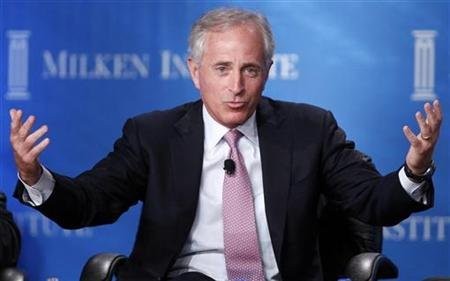Cumulative figures from the Office of Management and Budget (OMB) indicate the problem: While tax receipts have steadily increased from $1.9 trillion in 2001 to an estimated $2.4 trillion in 2012, governmental outlays have, just as steadily, gone from $1.8 trillion to $3.7 trillion. The net has gone from a surplus of $138 billion to a deficit of $1.3 trillion.
In the 1970s, the national debt, as a percent of GDP, remained fairly constant at about 22 percent. Today, the national debt is more than 100 percent GDP. The total debt is more than $16 trillion; the GDP for 2011 was slightly less than $15 trillion.
As a nation, we are overdrawn at the bank and maxed out on our credit cards. Failure to deal with the situation will lead us to the scenes we have seen in Greece, Spain, and Stockton, California.
The first part of the solution is to cut spending. Entitlements take about 62 percent of federal spending. Any meaningful curbs on spending involve entitlement spending. Entitlement reforms are not that difficult to imagine: Means testing of benefits and phasing in an increase in the retirement age are two simple solutions. Senator Bob Corker’s Fiscal Reform Act of 2012 envisions just such reforms.
Cuts in discretionary spending have to be real and have to be meaningful. That means that they cannot be “Washington” cuts — mere decreases in the rate of growth of spending — but have to be real cuts: decreases from the prior year’s expenditures.
The next step deals with taxes, and this is more difficult, because the relationship between tax rates and tax revenues is not as clear as the relationship between spending and deficits.
As is evident from the OMB’s figures, receipts have more to do with the overall economy than with tax rates. Furthermore, an increase in rates further distorts an already too progressive tax system.
The premise of progressive taxation is that those who make more should pay more. But progressive tax rates don’t just require those who make more to pay more but to pay disproportionately more. If there were one rate of 10 percent, the citizen who makes 10 times that would pay 10 times as much. In a progressive rate structure, the taxpayer making 10 times as much pays 12 or 15 times as much. Or, if some had their way, 20 or 30 times as much.
The moral justification for this is little different from that of an armed robber. The armed robber takes your money, because he has a gun and you don’t, and you have money and he doesn’t. Progressive taxers take your money, because they have the votes and you don’t.
In addition, progressive taxation makes it harder for people to move up the economic ladder — it robs families of opportunity. It works like a stress test at the physician’s office. As you run faster, the nurse keeps increasing the incline on the treadmill until you can’t move.
As a practical matter, raising rates doesn’t work. Raising tax rates will increase revenues only if everyone’s economic behavior stays the same after the rates have been raised. Unfortunately for proponents of this theory, Americans are not stupid. If rates are raised on income, those with high incomes will find ways to avoid characterizing their receipts as income — through deductions, through retirement, through forgoing income altogether.

Senator Bob Corker
Consider the two-income family: The second income takes a toll on the family in terms of time, there are expenses associated with that second income, and the second income is taxed at the higher marginal rates applicable to that family. If you increase the tax on the second income, it will, for some, be a rational choice to forgo that income.
A better approach is to cap deductions, again as proposed in Corker’s bill. This has the effect of producing more revenue according to Congressional Budget Office estimates and the virtue of making the system flatter. A flatter tax is a fairer tax.
There is a way to avoid the fiscal cliff, but the cliff has been created by spending. Making a progressive tax system more progressive is neither a practical nor a moral solution.
John Ryder, a Memphis bankruptcy lawyer, is a Republican national committeeman for Tennessee.